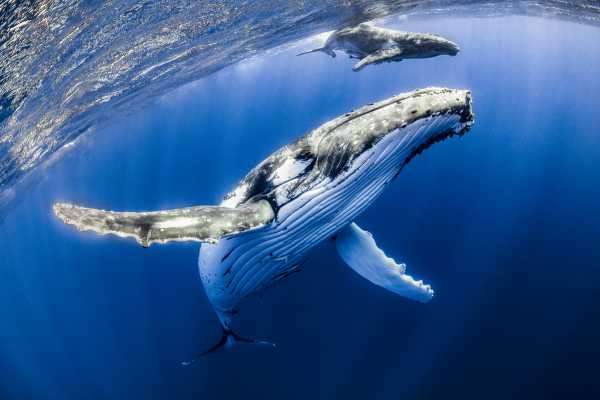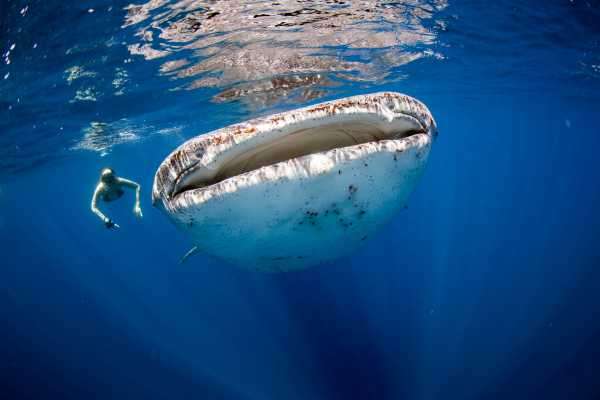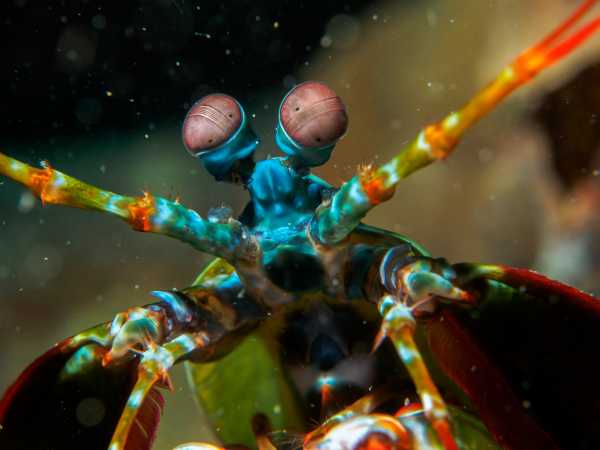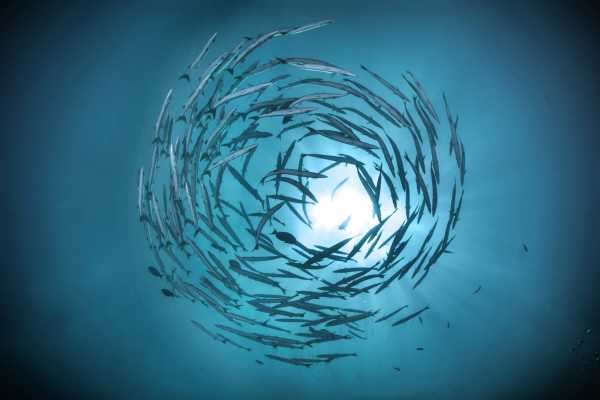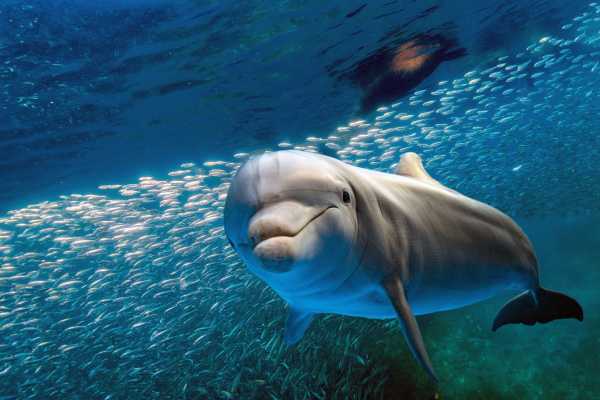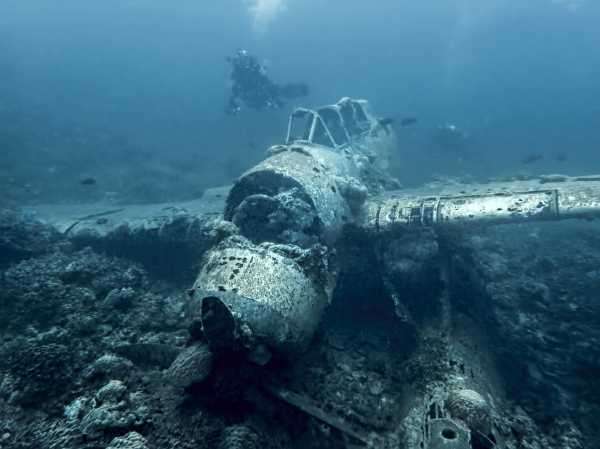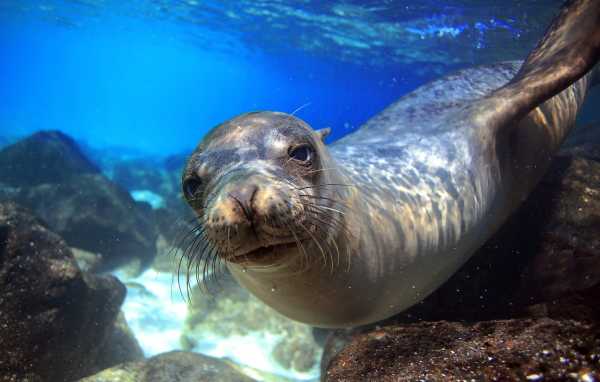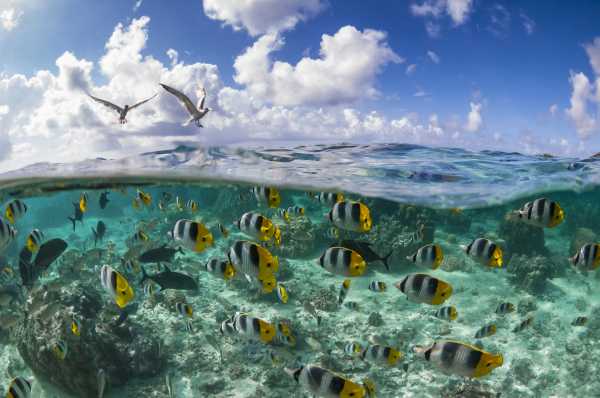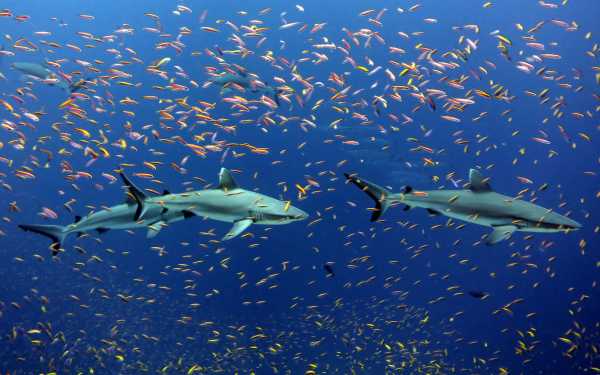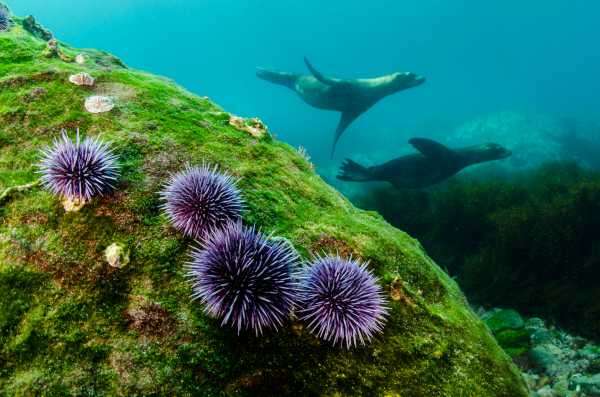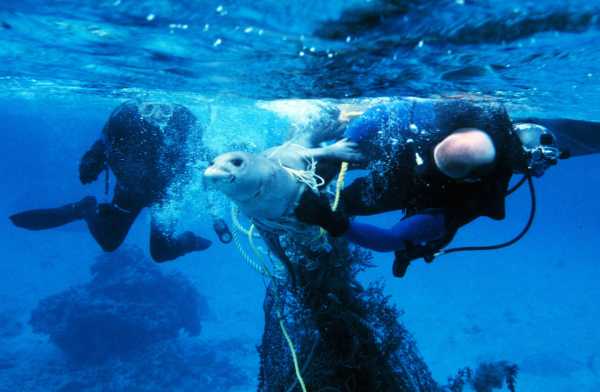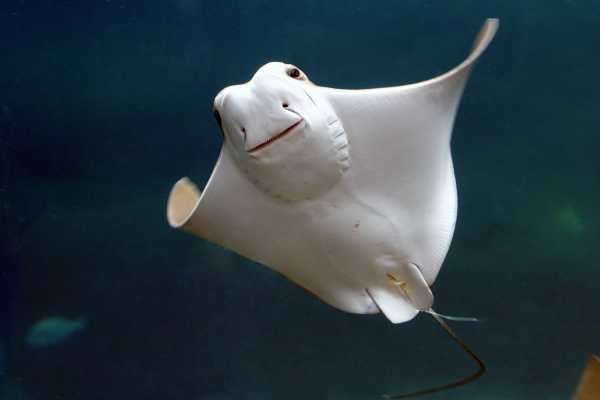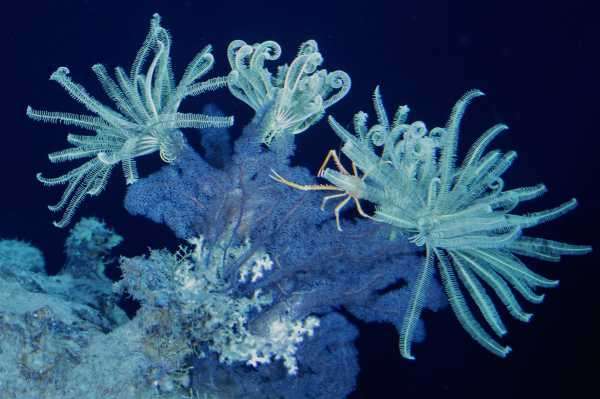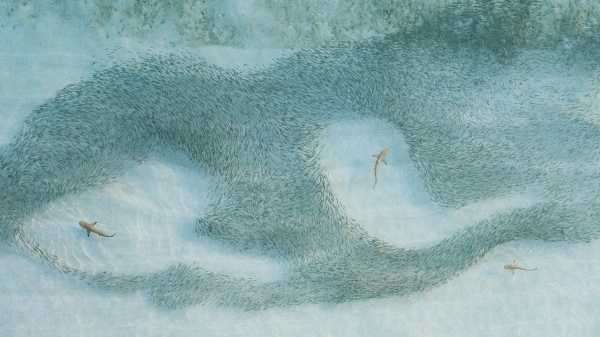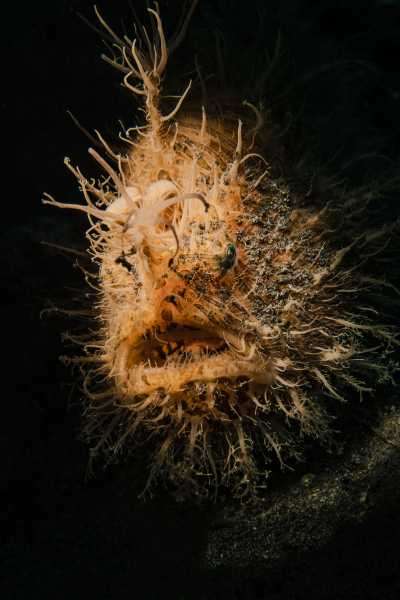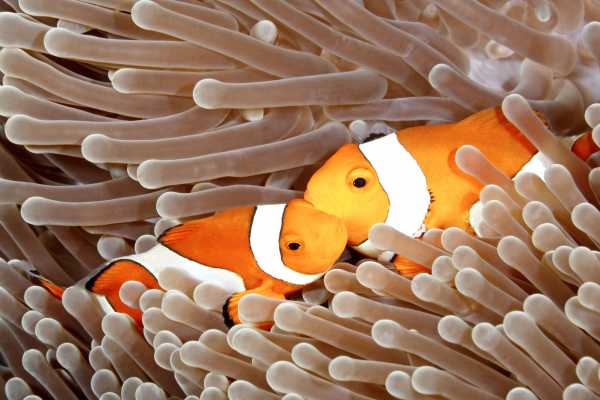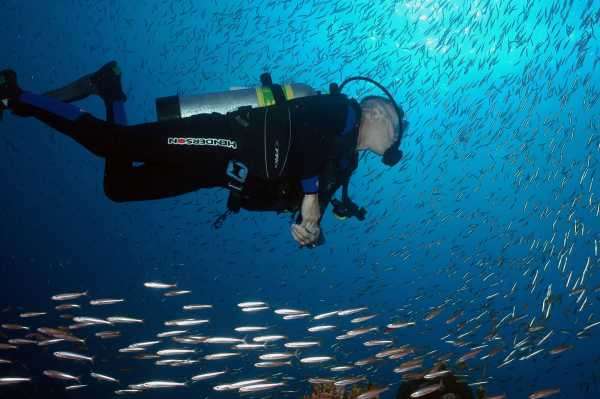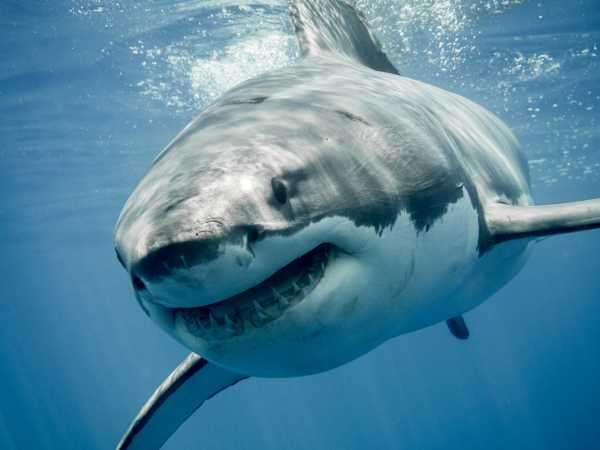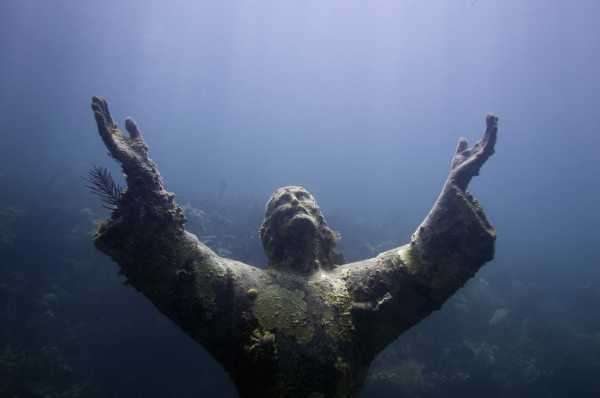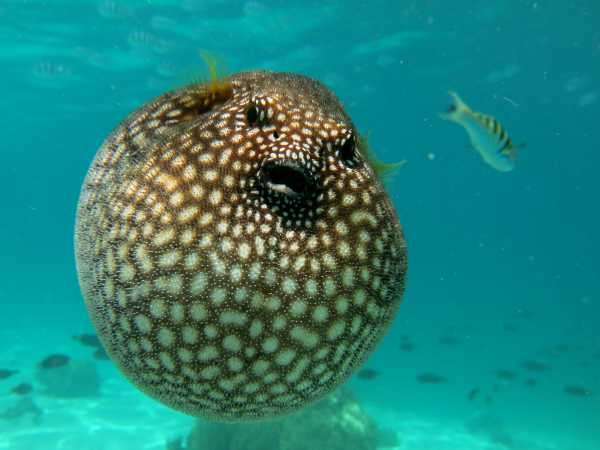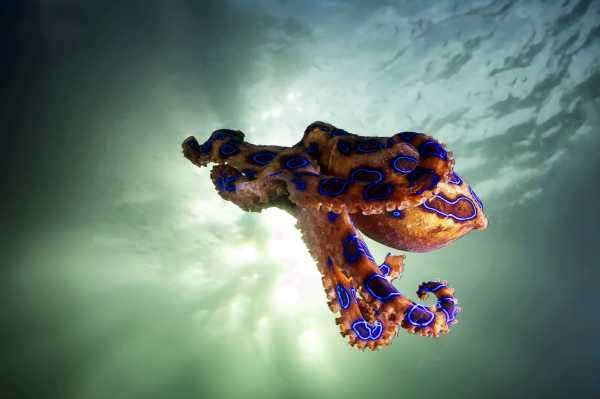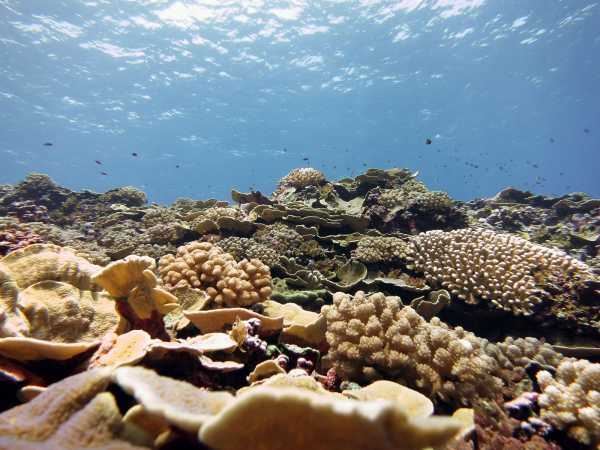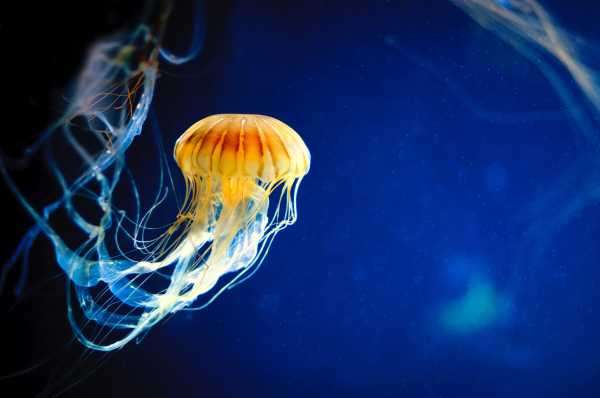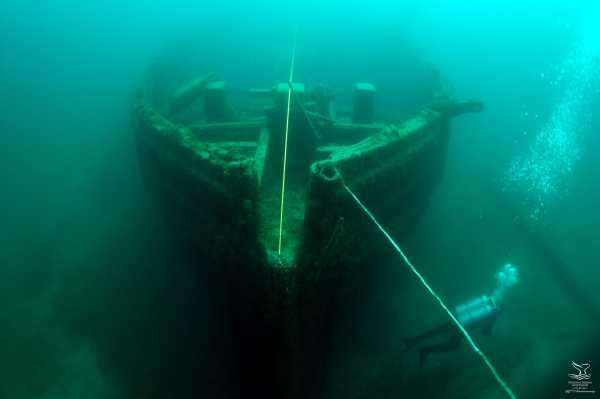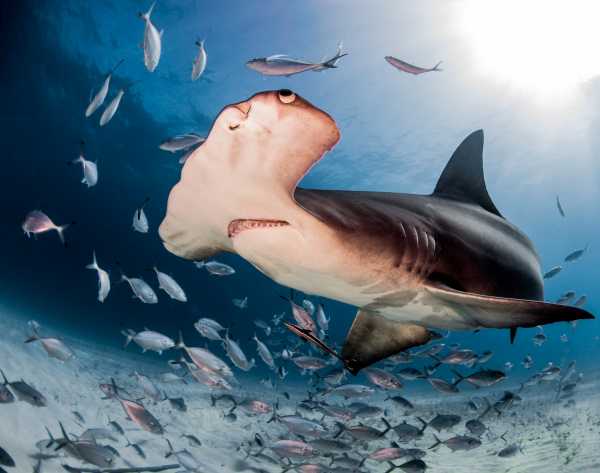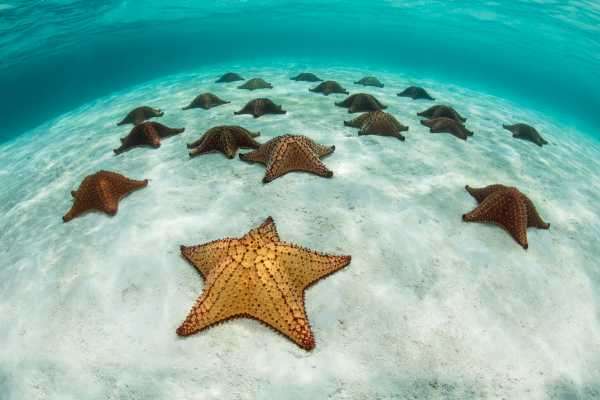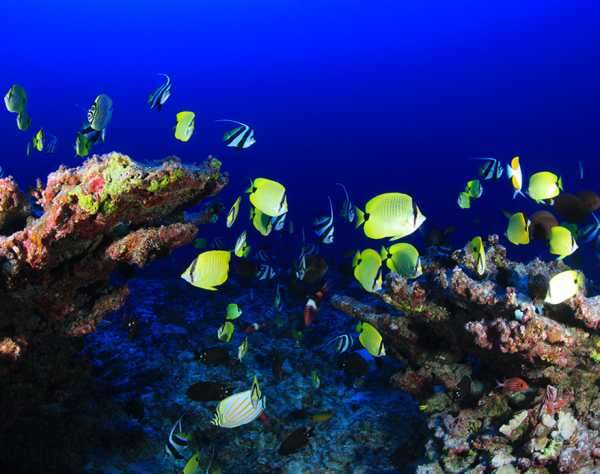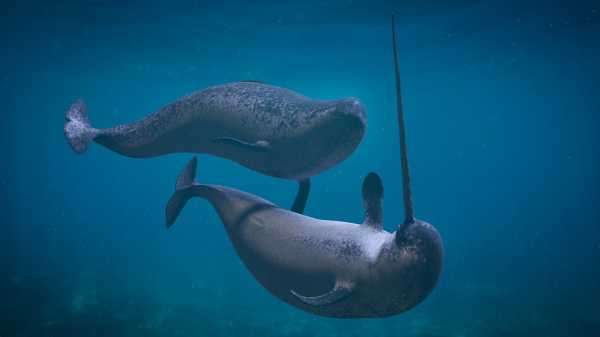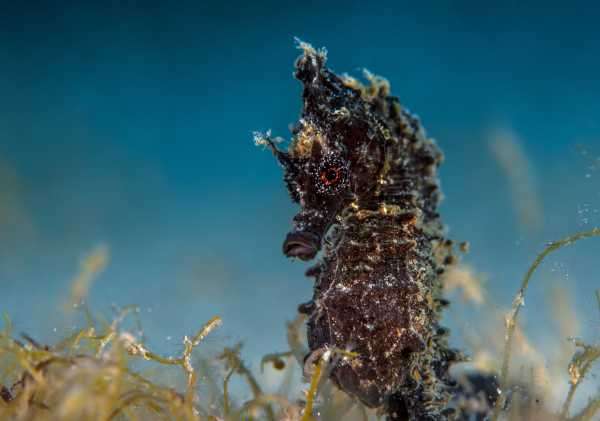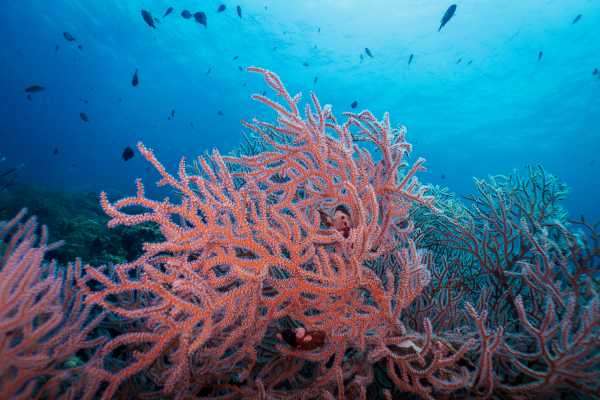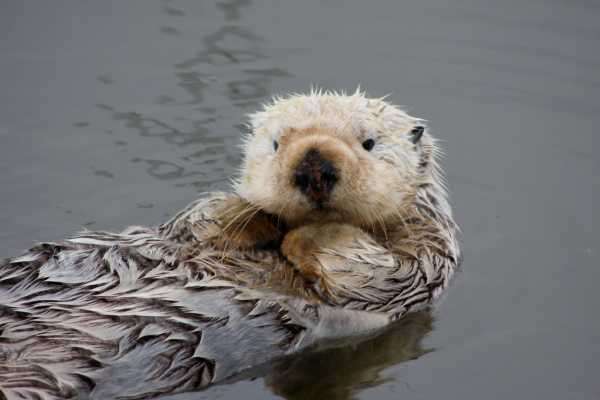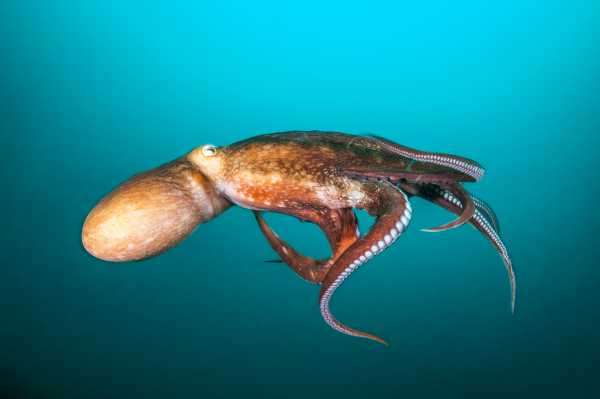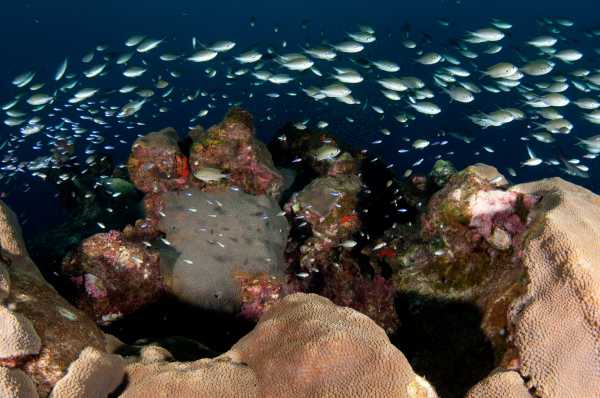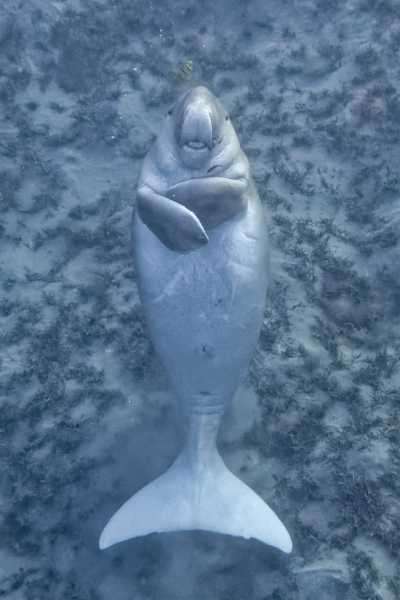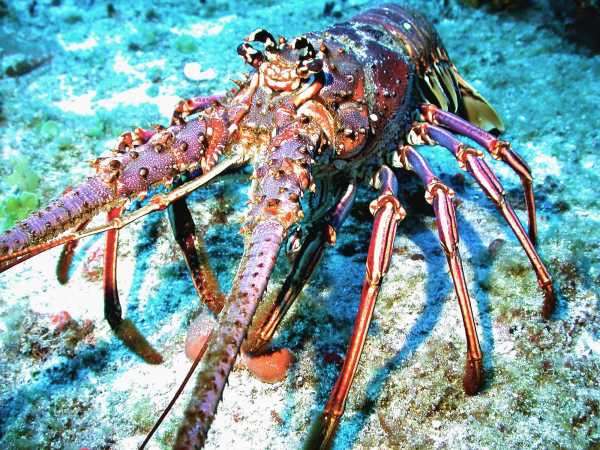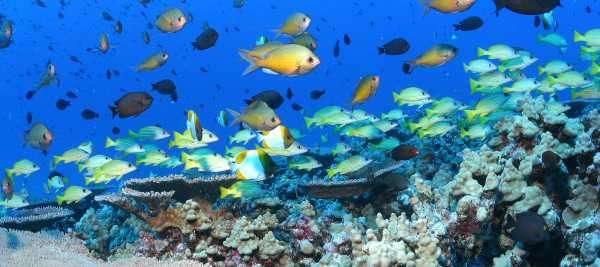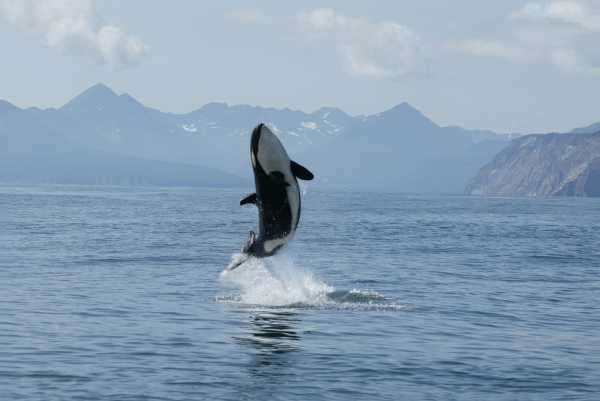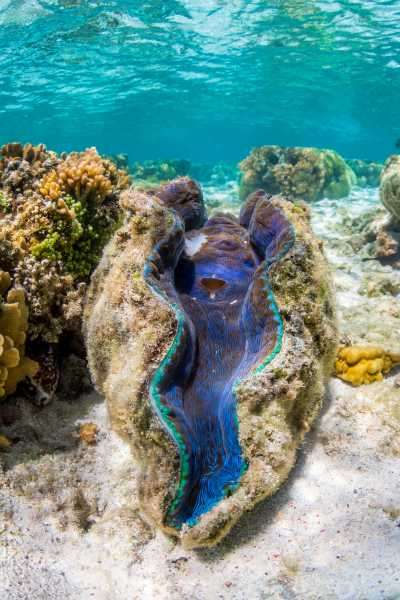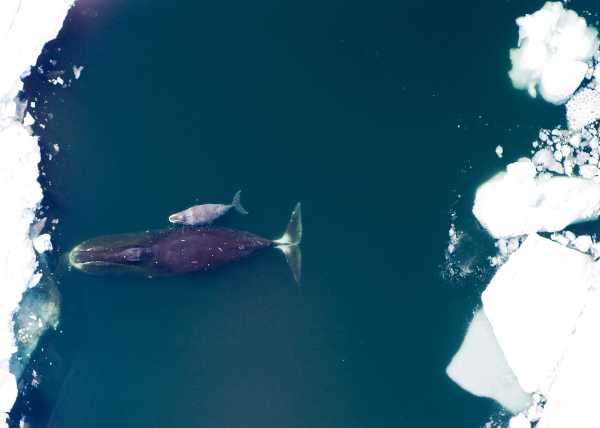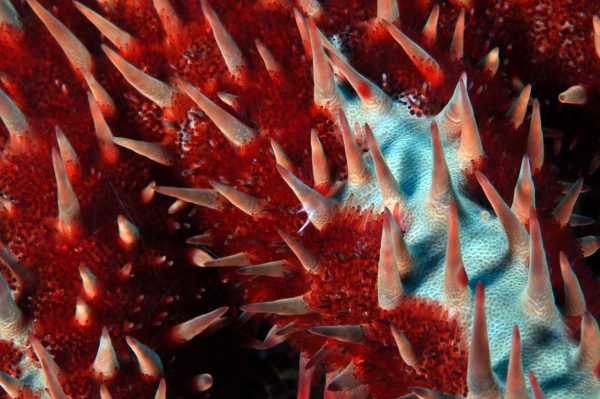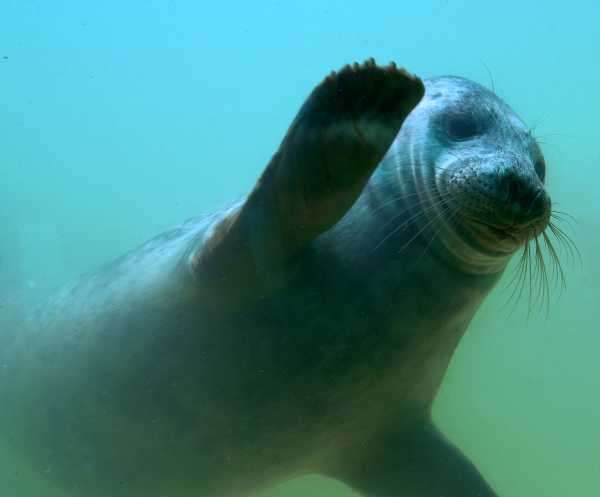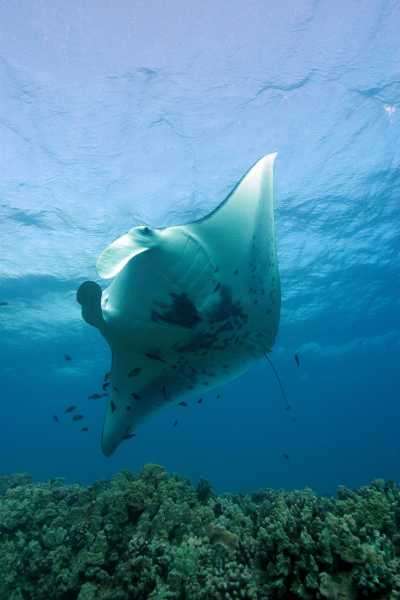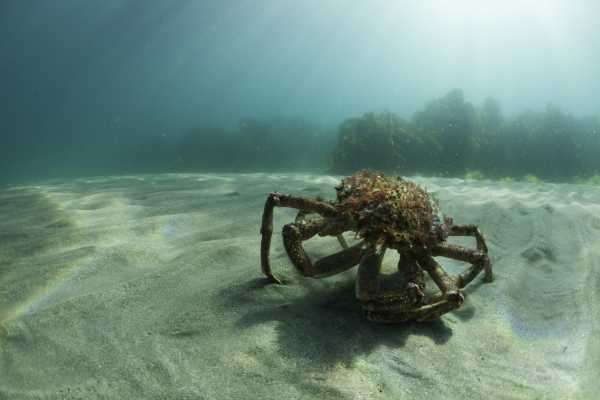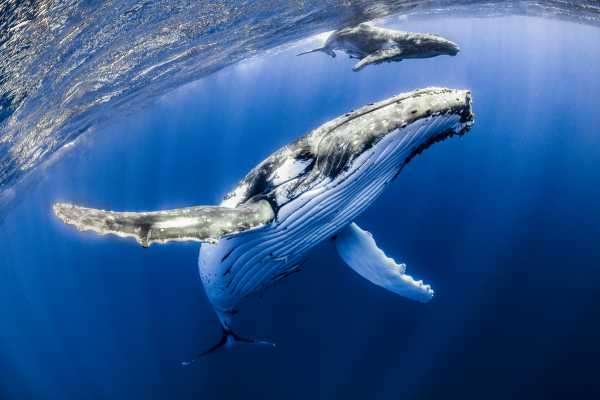Shares
Comments (0)

The most stunning sights from under the waves
The sea continues to be a source of great exploration and enchantment for many. With its charismatic (and sometimes elusive) wildlife, stunning plant life and even shipwrecks and underwater statues, there are so many wonders to appreciate under the waves. But you don’t have to be an experienced diver to take a look at these 50 amazing sights from our oceans — We’ve gathered them here for you.
Prev
Page 1 of 51
Next
Prev
Page 1 of 51
Next
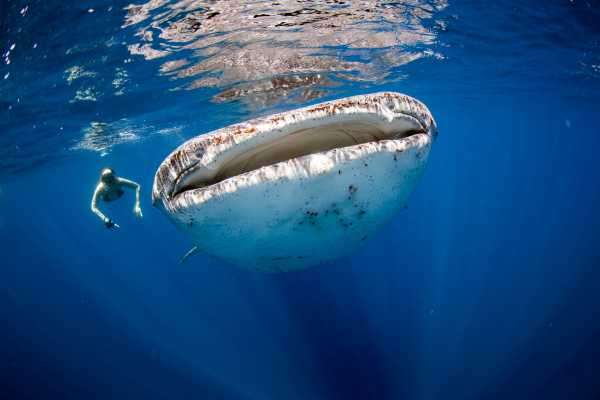
The world’s biggest fish
A woman swims next to a whale shark, the ocean’s biggest fish! Despite their dominance in size (they are as big as a school bus), they prefer to eat plankton, which they filter feed by swimming along with their mouths open.
Prev
Page 2 of 51
Next
Prev
Page 2 of 51
Next
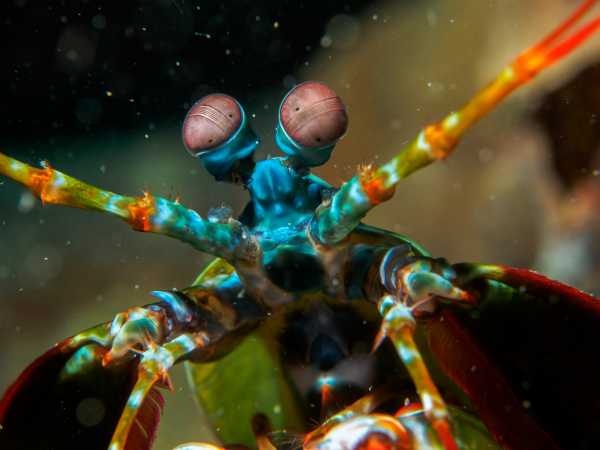
Fast-punching shrimp
This brightly colored crustacean is a Peacock mantis shrimp. The females tend to be mainly red, but the males display these enchanting colors. They use an extremely fast punch to kill their prey — one of the fastest movements in the animal kingdom and forceful enough to break through an aquarium’s glass wall.
Prev
Page 3 of 51
Next
Prev
Page 3 of 51
Next
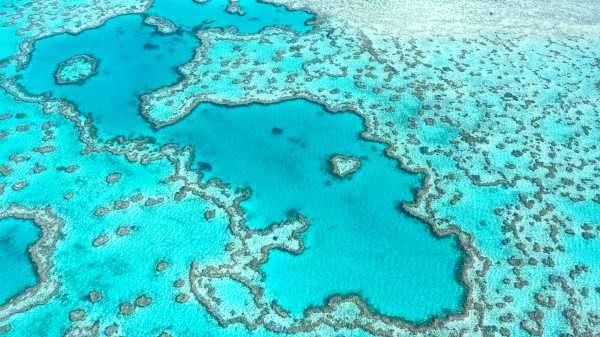
The Heart Reef
Considered the world’s largest coral reef system, the Great Barrier Reef is made up of 3,000 individual reefs and 900 islands off the eastern coast of Australia. One of those reefs takes on a heart shape, hence its moniker — Heart Reef. This reef is located in the Whitsunday Islands and since snorkelers and scuba divers are not allowed to enter this protected area, it must be viewed from the air.
Prev
Page 4 of 51
Next
Prev
Page 4 of 51
Next
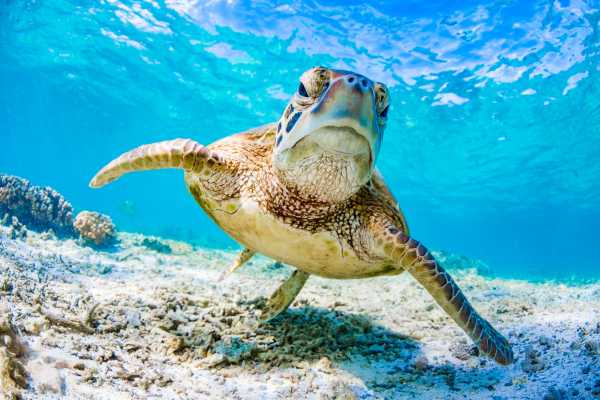
Green Turtle flies
A green turtle swims in the Great Barrier Reef in Queensland, Australia. This species can live for up to 80 years and can grow up to 5 feet (1.5 meters) long.
Prev
Page 5 of 51
Next
Prev
Page 5 of 51
Next
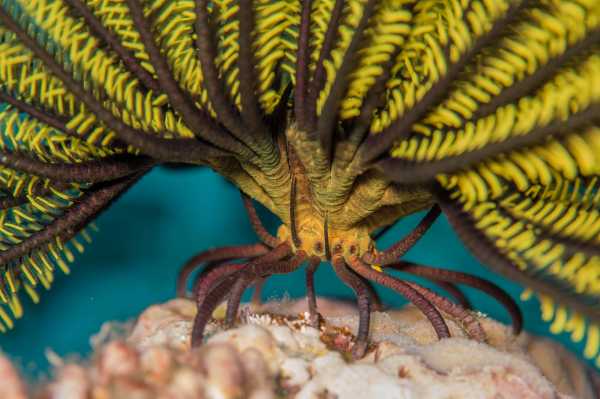
Living fossil
Up close with a crinoid — a marine animal related to sea stars and sea urchins. They are sometimes referred to as living fossils, because they have been around for about 450 million years and can still be found in the oceans today. This photo was taken in a coral reef in the Northern Mariana Islands.
Prev
Page 6 of 51
Next
Prev
Page 6 of 51
Next

Swirling fish
This stunning shot shows a small school of barracuda fish swirling through the sea. They are some of the fastest fish in the world and have been known to swim up to 36 mph (58 km/h).
Prev
Page 7 of 51
Next
Prev
Page 7 of 51
Next
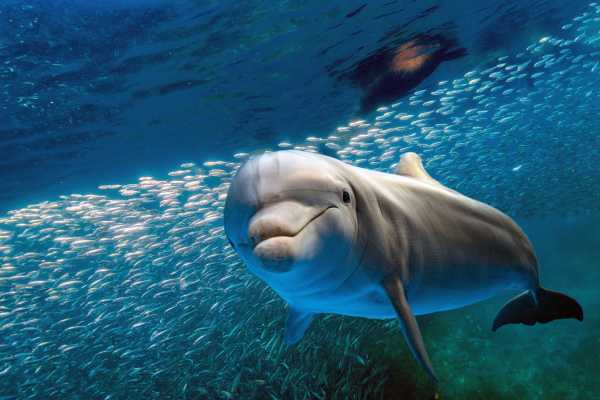
Curious dolphin
One of the most commonly observed dolphins, the bottlenose is no less fascinating with its forever smiling face and curious manner. They can live for up to 60 years and have their own whistles to communicate with others.
Prev
Page 8 of 51
Next
Prev
Page 8 of 51
Next
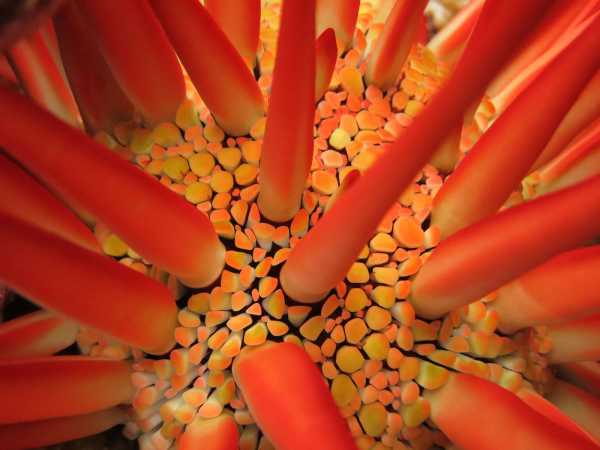
Unreal urchin
Slate pencil urchins are usually found on the bottom of coral, lagoons or seagrass. This one was photographed up close at Kingman Reef in the Pacific Remote Islands Marine National Monument.
Prev
Page 9 of 51
Next
Prev
Page 9 of 51
Next
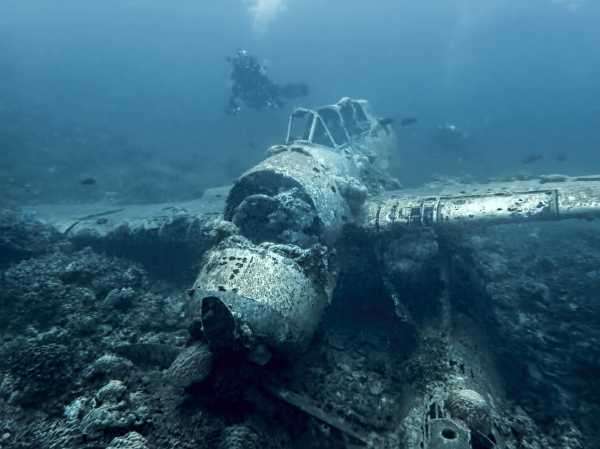
Palau’s seaplane wreckage
This largely intact Jake Seaplane wreck from World War II sits 45 feet (nearly 14 meters) below the ocean surface off Palau, Micronesia.
Prev
Page 10 of 51
Next
Prev
Page 10 of 51
Next
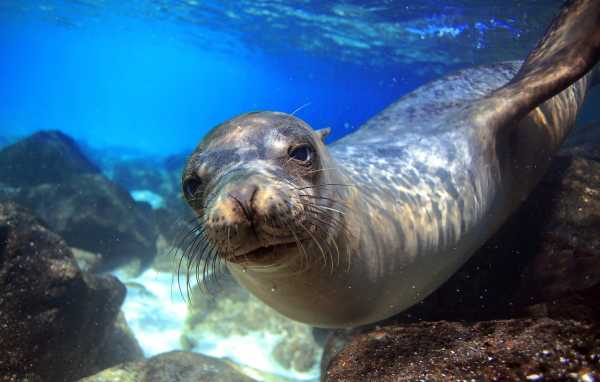
Speedy sea lion
California sea lions are faster than any other sea lion — they can swim up to 25 mph (40 km/h), and they can slow their heart rates down so they can stay underwater for up to 10 minutes.
Prev
Page 11 of 51
Next
Prev
Page 11 of 51
Next
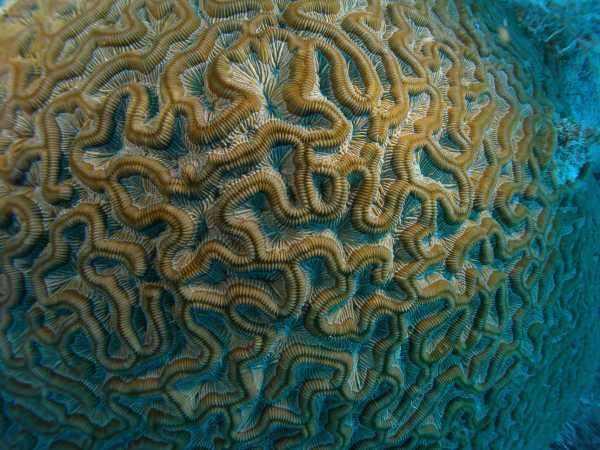
Brain Coral
This close-up image of brain coral (which quite clearly got its name for its resemblance to the human organ) was shot in the Dry Tortugas, Florida. Its deep grooves form large circular structures that can be more than 6 feet (1.8 meters) in diameter.
Prev
Page 12 of 51
Next
Prev
Page 12 of 51
Next
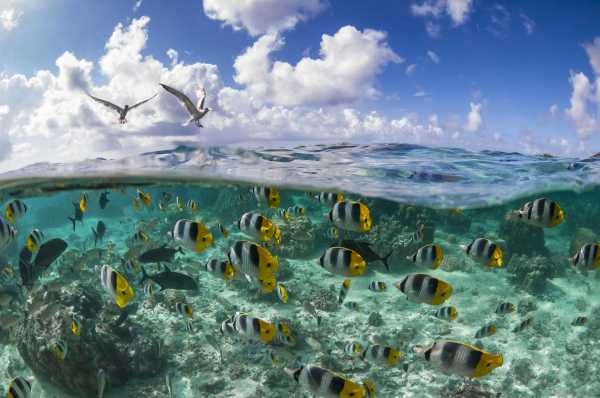
Shallow waters
Pacific double-saddle butterflyfish dominate the waters in this stunning split-view image. They are usually found in shallow waters such as this and prefer high currents.
Prev
Page 13 of 51
Next
Prev
Page 13 of 51
Next
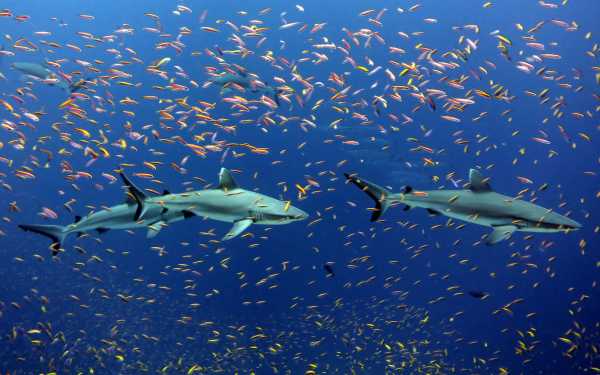
Swimming with grey reef sharks
These stunning grey reef sharks swim amongst colorful anthias fish in Jarvis Island, Pacific Remote Island Areas Marine National Monument. The males of the species can grow to 4.8 feet (1.5 meters).
Prev
Page 14 of 51
Next
Prev
Page 14 of 51
Next
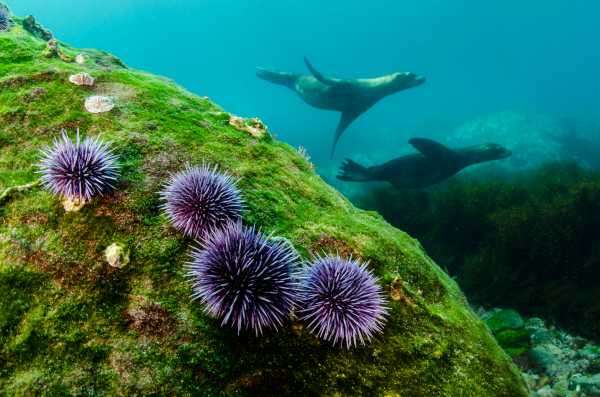
Pacific purple sea urchins
Sea lions swim by Pacific purple sea urchins. This species of urchins is covered in pincers, tube feet and purple spines which the urchin uses to grab food and stay safe from predators.
Prev
Page 15 of 51
Next
Prev
Page 15 of 51
Next
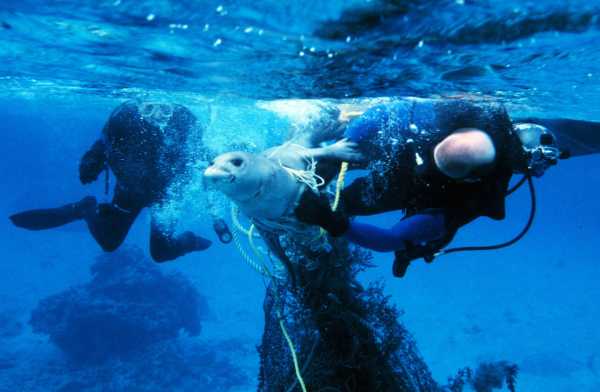
Marine debris
A seal is caught amongst fishing nets, as the divers work hard to free it. Marine debris can injure wildlife, as well as cause issues for boats passing through.
Prev
Page 16 of 51
Next
Prev
Page 16 of 51
Next
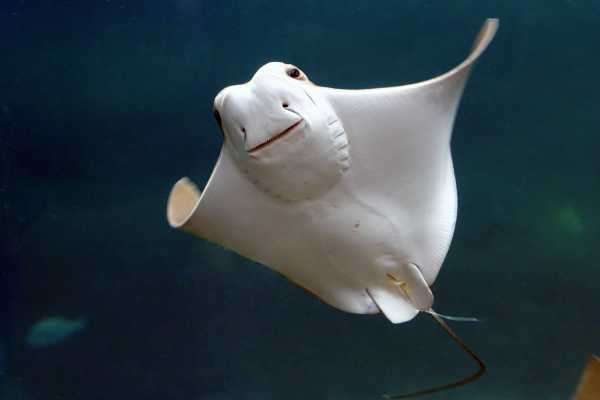
Smiling stingray
Stingrays have no bones in their bodies but are instead made of flexible cartilage. They also have gel-filled pits across their face that help them to detect electrical signals from other animals when they move.
Prev
Page 17 of 51
Next
Prev
Page 17 of 51
Next

Squatting on coral
A squat lobster pushes its way through four crinoids (feather stars), which sit on top of a sea fan colony with a cold-water coral called Lophelia pertusa growing at the base. This photo was taken during a NOAA expedition in Roatan, Honduras, to work out the relationship between host corals and their associated species.
Prev
Page 18 of 51
Next
Prev
Page 18 of 51
Next
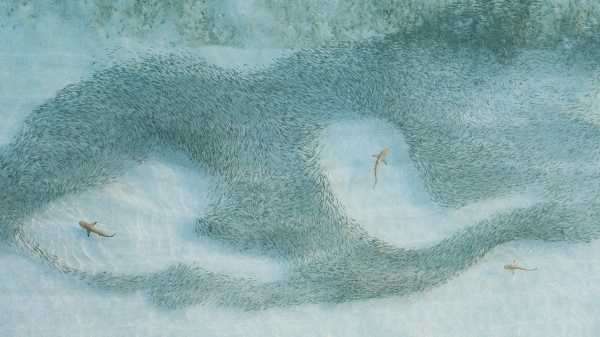
Looking for prey
Blacktip sharks look for prey in this stunning aerial photo. They tend to hunt small schooling fish, nabbing them as the sharks swim swiftly through the water, sometimes even breaching its surface, according to the Florida Museum of Natural History.
Prev
Page 19 of 51
Next
Prev
Page 19 of 51
Next
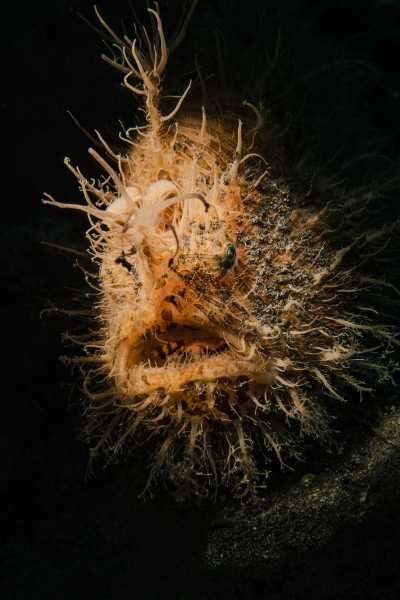
Hairy frogfish
This wild-looking creature is a Hairy frogfish. It has no scales; instead its body is covered in fleshy spines called spinules that resemble hair. They can change color to blend into their surroundings.
Prev
Page 20 of 51
Next
Prev
Page 20 of 51
Next

A Clownfish cuddle
Forget “Finding Nemo,” these two clownfish (also called anemonefish) win the cute race as they rest together amongst a sea anemone’s tentacles. Mucous covers this fish’s body to protect it from the anemone’s stinging cells.
Prev
Page 21 of 51
Next
Prev
Page 21 of 51
Next
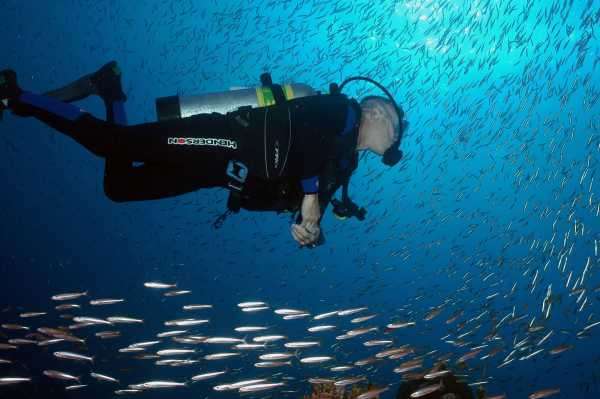
A diving adventure
A diver explores the Flower Garden Banks National Marine Sanctuary in the Gulf of Mexico. This area is protected by NOAA’s Office of National Marine Sanctuaries and is one of 14 such sites around the world.
Prev
Page 22 of 51
Next
Prev
Page 22 of 51
Next
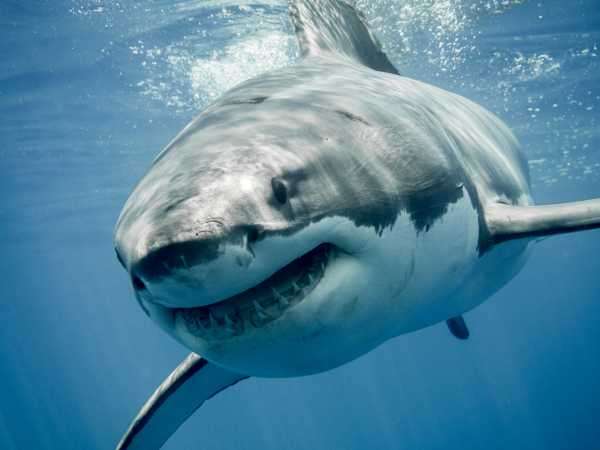
The Great White
A great white shark (Carcharodon carcharias) swimming in the Pacific Ocean at Guadalupe Island in Mexico. This top predator can reach up to 20 feet (6 meters) in length. Great white shark attacks on humans are rare; people, however, are a great white’s greatest threat. “People, on the other hand, capture too many great whites, through targeted fisheries or accidental catch in other fisheries, and scientists generally consider great whites to be vulnerable to extinction,” said Oceana, a nonprofit tasked with protecting the oceans.
Prev
Page 23 of 51
Next
Prev
Page 23 of 51
Next
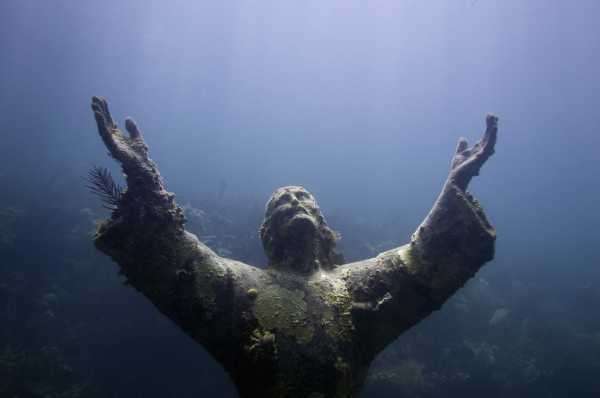
Christ the Abyss
The original cast bronze statue of Jesus Christ made by Guido Galletti, called “Christ the Abyss,” can be found between Camogli and Portofino, Italy, in the Mediterranean Sea.
Prev
Page 24 of 51
Next
Prev
Page 24 of 51
Next
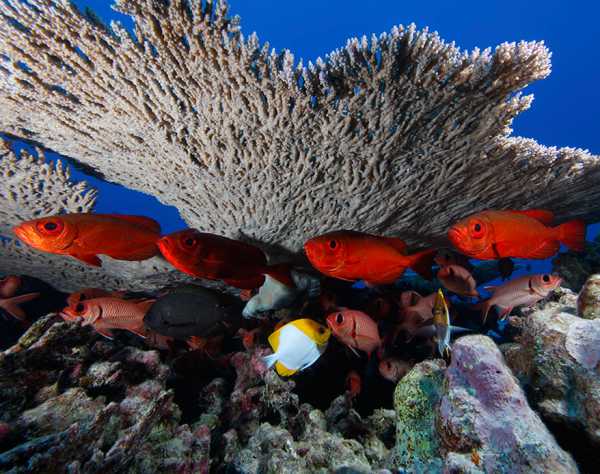
Bigeye at Rapture Reef
These bright-red Bigeye fish swim at Rapture Reef within the Northwestern Hawaiian Islands Marine National Monument. Most species of Bigeye are carnivorous and nocturnal.
Prev
Page 25 of 51
Next
Prev
Page 25 of 51
Next
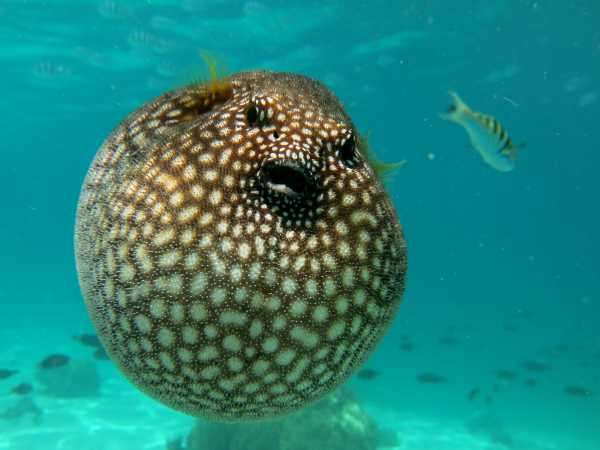
Deadly pufferfish
A pufferfish underwater at Moorea Island, French Polynesia. There are more than 120 species of pufferfish, and most of them contain a substance known as tetrodotoxin, making them lethal to predators. The toxin is 1,200 times more poisonous than cyanide — the amount of toxin in one pufferfish could kill up to 30 people, according to National Geographic.
Prev
Page 26 of 51
Next
Prev
Page 26 of 51
Next

Venomous octopus
One of the most venomous octopuses in the world, the blue-ringed octopus has distinctive blue rings that become more vivid when it becomes agitated. Its venom is 1,000 times more powerful than cyanide, and the little creature holds enough venom to kill 26 adult humans within minutes, according to the Ocean Conservancy.
Prev
Page 27 of 51
Next
Prev
Page 27 of 51
Next
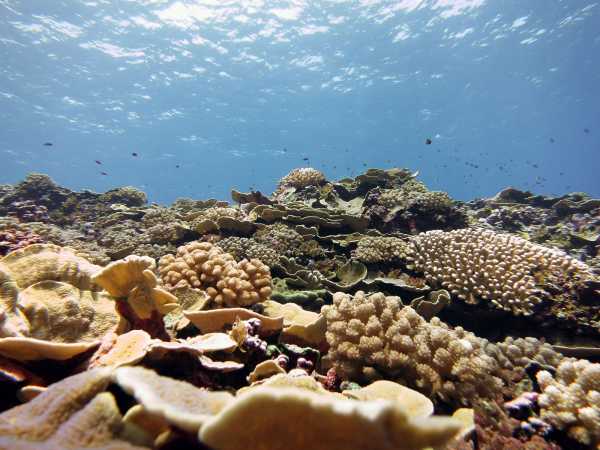
Coral Reef at Swains Island
Covered in stunning, dappling light, here we see rice coral (Montipora species) and a small-branching coral (Pocillopora meandrina) in the reef benthic community at Swains Island, a marine sanctuary in American Samoa.
Prev
Page 28 of 51
Next
Prev
Page 28 of 51
Next
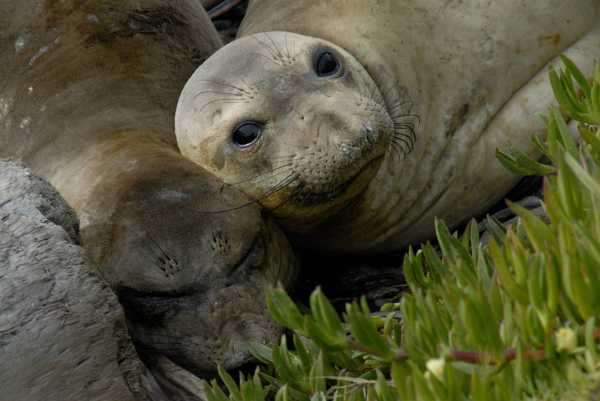
Snuggly seals
Northern elephant seals, named for the elephant-like noses sported by the adult males, are giants. The males can grow to more than 3 feet (4 meters) in length and weigh up to 4,500 pounds (2,000 kilograms), according to the Marine Mammal Center. Females, meanwhile, grow to about 10 feet (3 m) and can weigh 1,500 pounds (600 kg). They are the second-largest seals in the world. In the past, the seals were hunted to near-extinction, mostly for their blubber, which was used as lamp oil. Today, there are about 150,000 elephant seals, with 124,000 of these taking up residence off California, the Marine Mammal Center said.
Prev
Page 29 of 51
Next
Prev
Page 29 of 51
Next
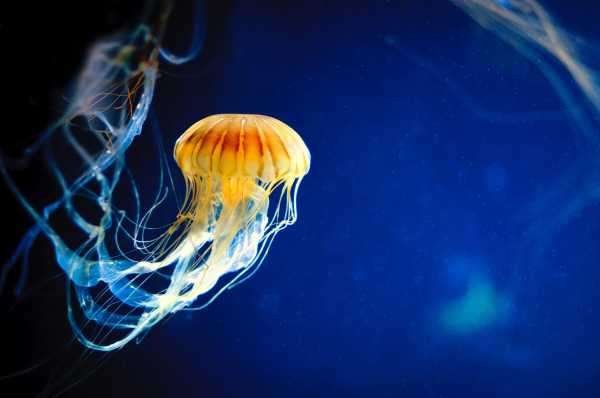
Orange Jellyfish
A Pacific sea nettle (Chrysaora fuscescens). This species can grow up to nearly a foot (30 centimeters) in diameter, and its 24 tentacles can trail 14 feet (4.5 meters) behind it. Even so, they are usually much smaller on average.
Prev
Page 30 of 51
Next
Prev
Page 30 of 51
Next
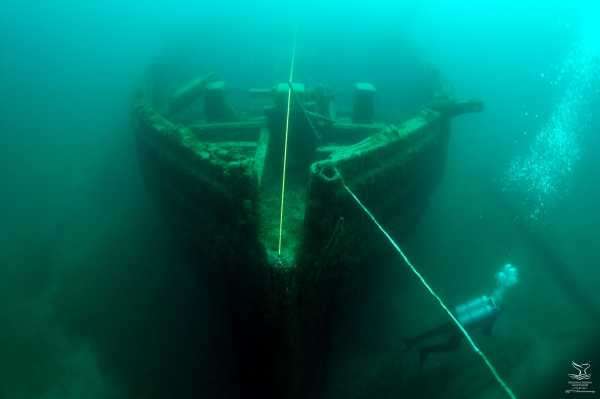
Shipwrecked
The largely intact hull of the wooden two-masted schooner E.B. Allen can be found 100 feet (30.5 meters) underwater at Thunder Bay National Marine Sanctuary in Michigan.
Prev
Page 31 of 51
Next
Prev
Page 31 of 51
Next
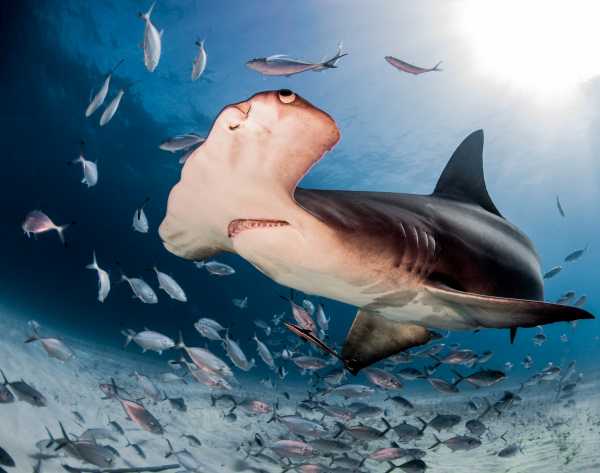
The solitary Hammerhead
There are at least eight species of hammerhead sharks, which sport weirdly shaped heads equipped with electrical receptors that help to detect prey. Their wide-set eyes also give them a bigger range of view for finding prey.
Prev
Page 32 of 51
Next
Prev
Page 32 of 51
Next
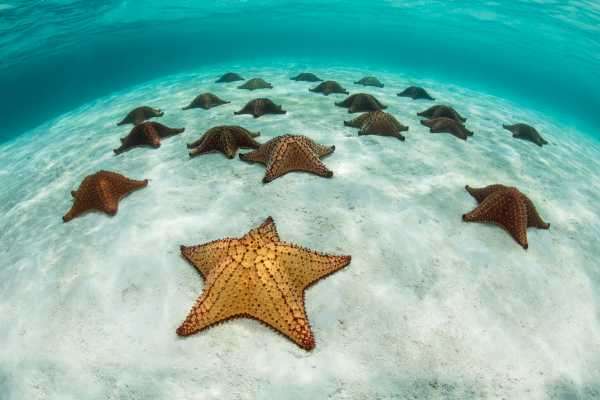
Sea stars in shallow waters
A stunning display of red cushion sea stars (Oreaster reticulatus) on a shallow sandy seafloor off the coast of Belize in the Caribbean Sea. This sea star has tube feet that it uses to slowly move around.
Prev
Page 33 of 51
Next
Prev
Page 33 of 51
Next
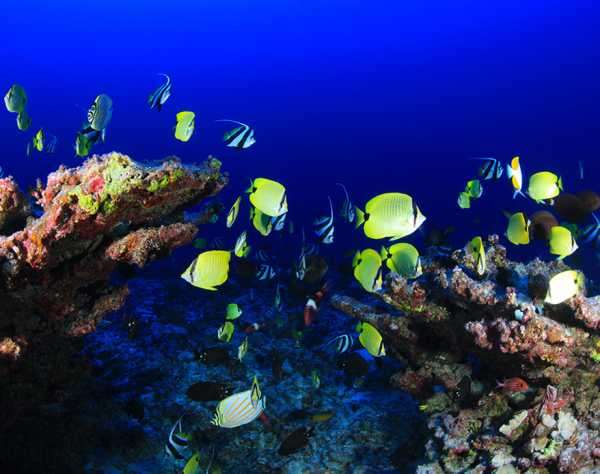
Pearl and Hermes Atoll
Fish swim through the Pearl and Hermes Atoll in the Northwestern Hawaiian Islands. The sprawling coral reef extends over 450 square miles (1,165 square kilometers), according to the U.S. Fish and Wildlife Service.
Prev
Page 34 of 51
Next
Prev
Page 34 of 51
Next
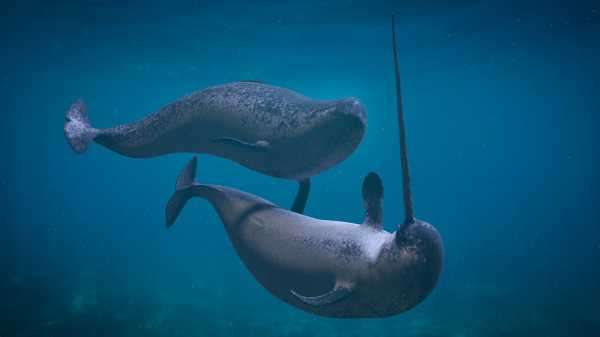
Narwhal couple
Nawhals play in the ocean. The male is more likely than the female to have the signature spiral tusk, which is embedded with millions of nerve endings to help the animal navigate its environment.
Prev
Page 35 of 51
Next
Prev
Page 35 of 51
Next
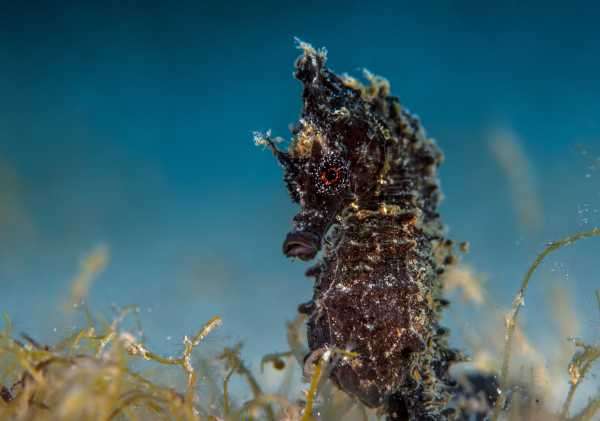
A seahorse and his babies
A long-snouted seahorse (Hippocampus guttulatus) carries babies in this underwater close-up. Though the seahorse will release up to 2,000 eggs from its pouch, only a few will survive. This species has no teeth and instead hoovers up tasty shrimp and other food, according to the marine conservation society in the U.K.
Prev
Page 36 of 51
Next
Prev
Page 36 of 51
Next
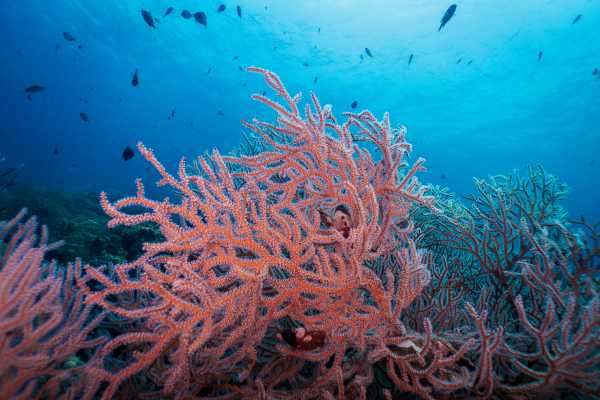
Red Finger Gorgonian
This tree-like coral mainly feeds off micro-plankton. This image was taken in Phi Phi, Andaman Sea, Krabi, Thailand.
Prev
Page 37 of 51
Next
Prev
Page 37 of 51
Next
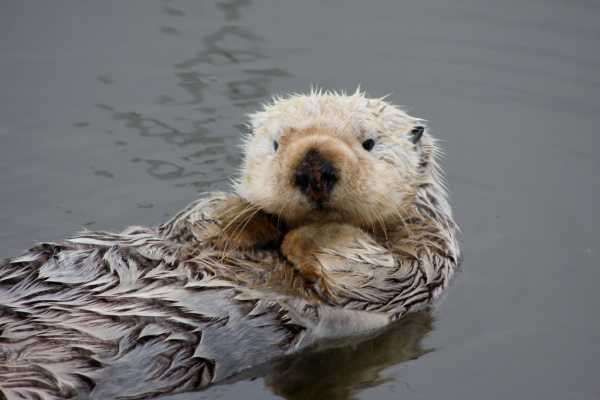
Southern Sea Otter
Otters never fail to make us smile, and this is definitely the case with this handsome Southern sea otter (also called a California sea otter), photographed at South Harbor, Moss Landing, California. Southern sea otters (Enhydra lutris nereis) can grow to a length of 4 feet (1.2 meters); females can weigh up to 50 pounds (23 kilograms), while males can reach 70 lbs. (32 kg). This southern population of sea otters is considered an endangered species, according to the Monterey Bay Aquarium.
This cute creature was submitted as an entry to the World Ocean Day Photo Contest by Dr. Steve Lonhart.
Prev
Page 38 of 51
Next
Prev
Page 38 of 51
Next
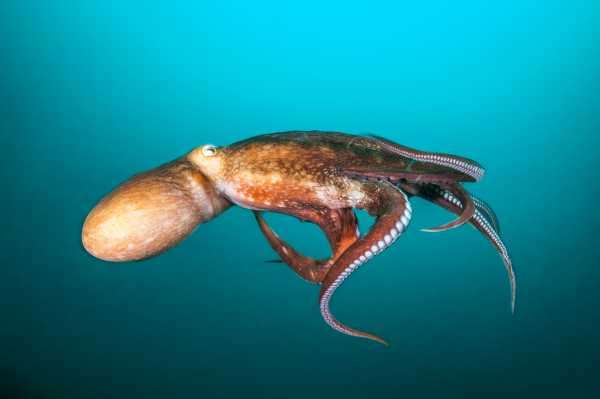
The largest octopus in the world
A giant Pacific octopus (Enteroctopus dofleini) was spotted in the Sea of Japan at a depth of about 65 feet (20 meters). As its name suggests, it’s the largest octopus in the world — the biggest specimen on record weighed 600 pounds (272 kilograms) and measured 30 feet (9 m) across, according to National Geographic.
Prev
Page 39 of 51
Next
Prev
Page 39 of 51
Next
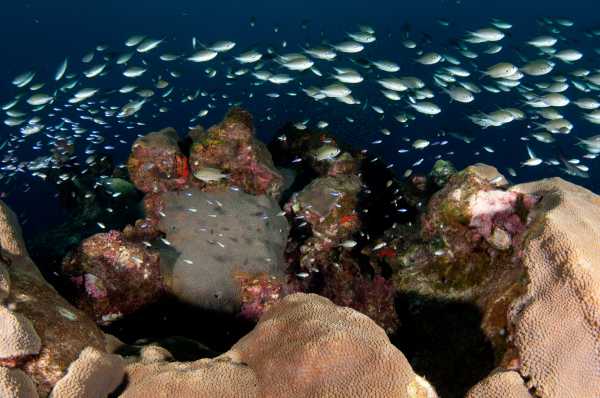
Great Star Coral
At the Flower Garden Banks National Marine Sanctuary, Brown chromis (Chromis multilineata) and other reef fish are seen swimming over great star coral (Montastraea cavernosa). The sanctuary, which is offshore of Galveston, Texas, in the Gulf of Mexico, is one of the 14 national marine sanctuaries aprotected by NOAA’s Office of National Marine Sanctuaries.
Prev
Page 40 of 51
Next
Prev
Page 40 of 51
Next
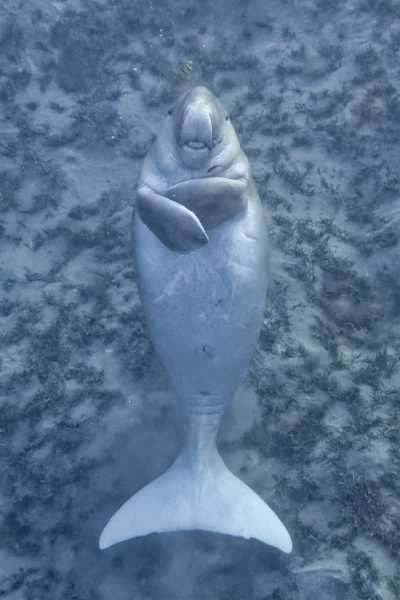
The sea cow
A dugong, also called a sea cow, floats on its back in the Red Sea, Marsa Alam, Egypt. This creature can live up to 70 years and grow to a maximum length of 13 feet (4 meters) and weight of 595 lbs. (270 kg). Unlike the similarly-shaped manatees that live solely in freshwater, dugongs are marine mammals that take up residence in shallow coastal (salty) waters of the Indian and western Pacific Oceans, according to the World Wildlife Fund.
Prev
Page 41 of 51
Next
Prev
Page 41 of 51
Next

Caribbean Spiny Lobster
A Caribbean spiny lobster, named for the forward-pointing spines covering its body, is one of the largest crustaceans on coral reefs and seagrass beds in the Caribbean Sea. To scare off predators, these spiny lobsters wave their horn-like antennas over their eyes, according to NOAA Fisheries. The smaller so-called antennules detect both movement in the water and chemicals. This photo was taken while NOAA mapped underwater habitats in the U.S. Virgin Islands.
Prev
Page 42 of 51
Next
Prev
Page 42 of 51
Next
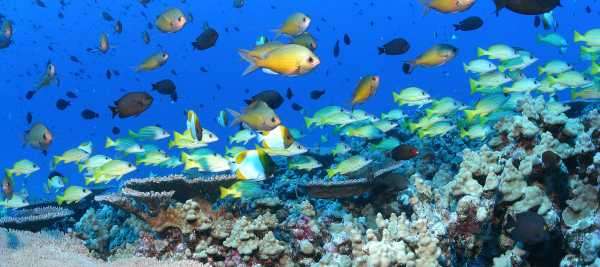
Swimming with the fishes
Three types of fish – Bluestripe snapper, Ta’ape, Threespot damselfish, and Oval Chromis damselfish – swim around stunning Lobe coral, Pohaku puna, and Table coral at French Frigate Shoals in the Papahānaumokuākea Marine National Monument.
Prev
Page 43 of 51
Next
Prev
Page 43 of 51
Next
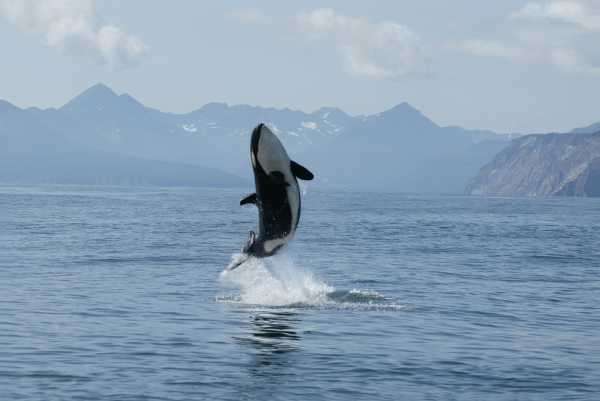
Blackfish
A killer whale jumping from the water is still one of the most amazing sights the ocean has to offer. This majestic creature is part of the dolphin family, but they are top of the food chain, hunting a variety of sea creatures, including penguins, seals, sea lions and even whales.
Prev
Page 44 of 51
Next
Prev
Page 44 of 51
Next
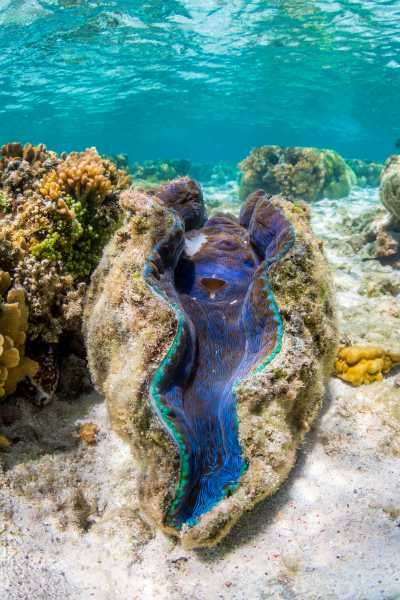
Giant clam at The Great Barrier Reef
A giant clam photographed at the Great Barrier Reef, Queensland, Australia. The majority of this clam’s mass is its shell, with its soft parts only accounting for around 10% of its weight.
Prev
Page 45 of 51
Next
Prev
Page 45 of 51
Next
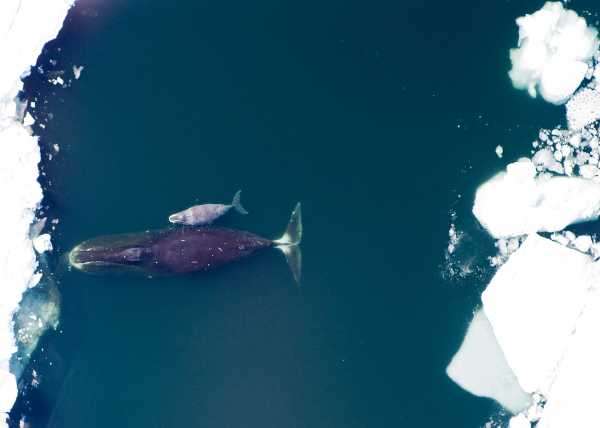
Bowhead baby
Bowhead whales have no dorsal fins, so here we simply see the heads of a whale and her calf reveal themselves from the water in the Arctic. Their skulls cover up to a third of their length, helping them to punch through thick sea ice.
Prev
Page 46 of 51
Next
Prev
Page 46 of 51
Next
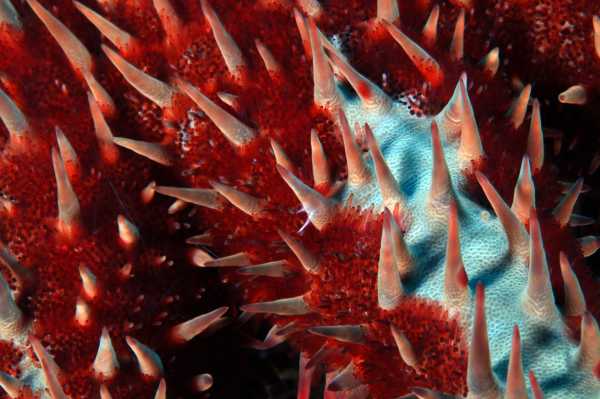
A spiky creature
A photographer took this amazing close-up of a crown-of-thorns starfish at Gardner Pinnacles in Papahānaumokuākea Marine National Monument. It’s named as such because of all the spines along its body, and it feeds on coral by inverting its entire stomach.
Prev
Page 47 of 51
Next
Prev
Page 47 of 51
Next
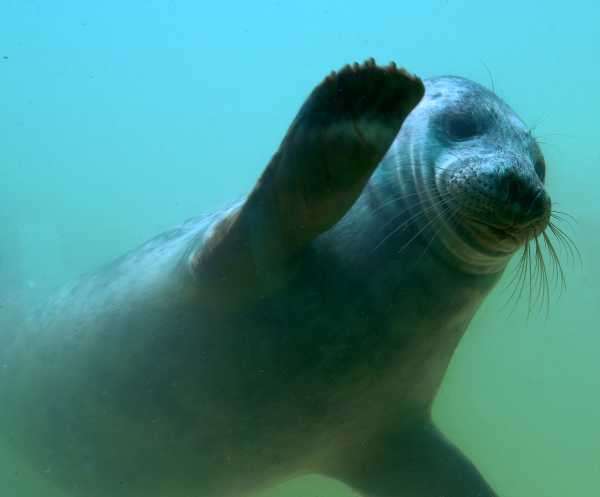
A grey seal wave
When underwater, grey seals can dive to depths of up to 230 feet (70 meters) and hold their breath for up to an hour at a time. They can live up to 35 years of age.
Prev
Page 48 of 51
Next
Prev
Page 48 of 51
Next
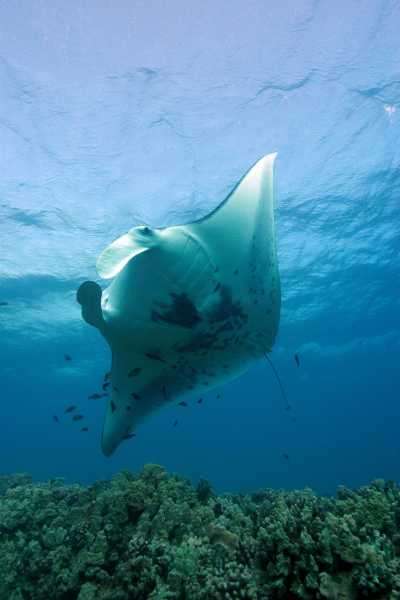
Manta Ray cleaning time
A Manta Ray over a reef, showing small fish cleaning parasites and other debris off of it. Manta Rays can have wingspans up to 29 feet (8.8 meters) wide and can dive more than 3,280 feet (1,000 m) underwater.
Prev
Page 49 of 51
Next
Prev
Page 49 of 51
Next
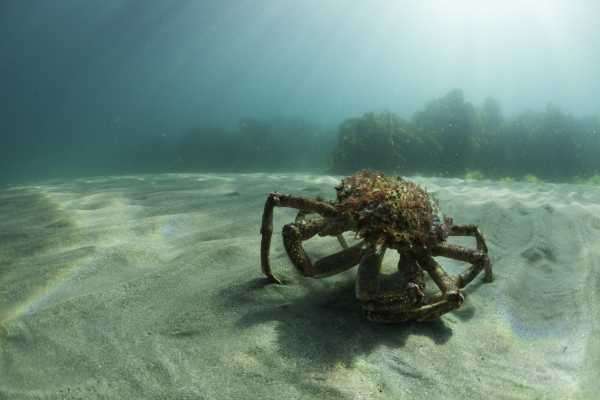
European Spider Crab
This European Spider Crab was found on the sea bed off Portwinkle in south Cornwall. As one of the largest crabs in British waters, this species is commonly fished for its meat.
Prev
Page 50 of 51
Next
Prev
Page 50 of 51
Next
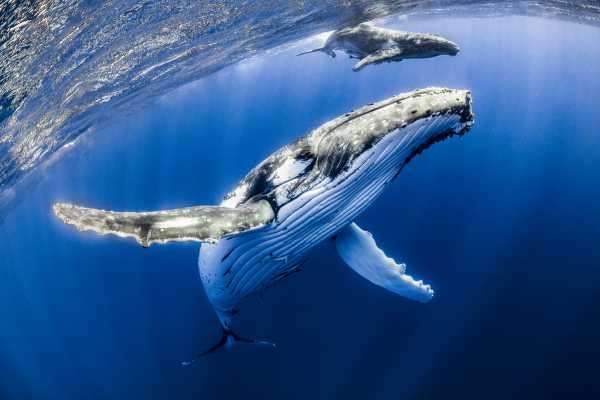
Mother song
A humpback whale mother and her calf swim the waters in Tonga. This icon of the seas is one of the largest animals on Earth, growing to 50 feet (16 meters) and weighing up to 40 tons (36 metric tons).
Prev
Page 51 of 51
Next
Prev
Page 51 of 51
Next
Shares
Comments (0)
Sourse: www.livescience.com

